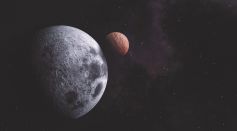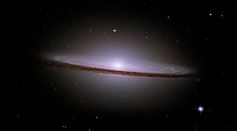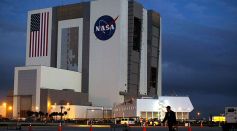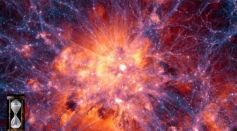Tags: Big Bang

NASA's James Webb Space Telescope Finds 'Undiscovered Country of Galaxies' 350M Years After the Big Bang

Big Bang Theory: Where Its Name Came From & Why Its More Accurate Than the Steady State Theory
Mysterious Force Causing Accelerated Expansion of the Universe, New Study Reveals

Origins of the Universe: Big Bounce Hypothesis Could be True, But Where Did It Start?

James Webb Space Telescope May Have Found the Oldest Galaxy Ever That Existed 13.5 Billion Years Ago

Novel Instrument, Cosmic Telescope Used to Study the Heart of Galactic Nurseries

Universe Expansion Could Stop as Dark Energy Weakens and Contract Very Slowly

Milky Way Galaxy Is Much Older Than Astronomers Think; What Happened To Its Troubled Adolescence Days?

Dark Matter Evidence: ‘Anti-Universe' Running Backward Through Time and Mirrors Our Cosmos Might Exist
Big Bang Mystery Finally Solved: Why Did It Create More Matter Than Antimatter?
Infinitely Expanding Universe: How Science Attempts To Explain the Multiverse
Tennis Ball Scale Primordial Black Holes: Will be Detected by a New Device Which Captures Gravitational Wave, Developed by Astrophysicists

Hubble Space Galaxy Shares Photo of Peculiar Galaxy and Earth-Like Exoplanet

NASA Green Lights SPHEREx Space Telescope Design, Aiming to Demysify Big Bang Further

The Very Large Telescope Detects a Supermassive Black Hole With 6 Surrounding Galaxies

Dr. Katie Mack Presents Five Possible End Scenarios for the Universe

A Study on Globular Clusters Date the Universe at 13.35 Billion Years Old

Largest 3D Map of the Universe Tells The Complete Story of the Expansion of the Universe

In 50 Years, The Universe Will Change And The Cosmos Will Be Stranger
What Was Going On Before the Big Bang?
Most Popular

Space Tourism Future: How Commercial Space Travel Will Transform Civilian Exploration

Universe Origin Revealed: Exploring the Latest Big Bang Science Theories and Discoveries

How Space Observation and the Solar Light Spectrum Make the Sun Look Different in Space Than on Earth

Tree Communication Explained: How Underground Fungi Networks Connect Entire Forests





